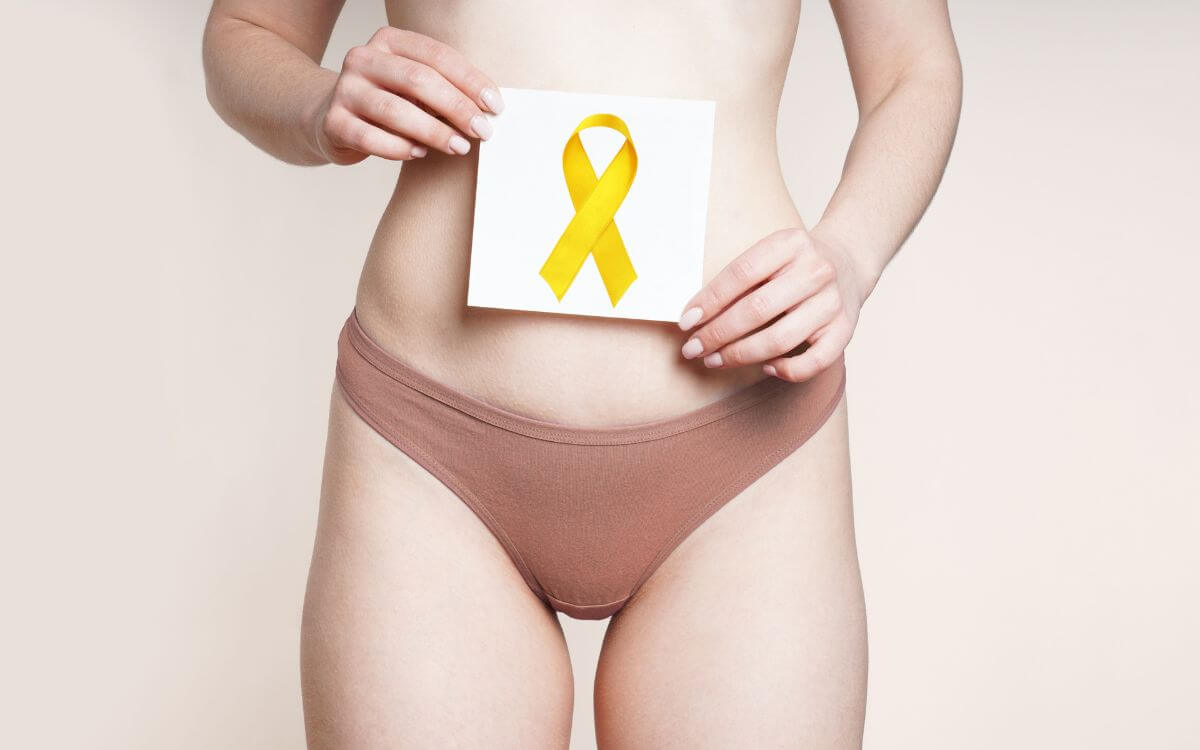Endometriosis: all you need to know!
From the first moment I met my wife her unwavering strength, resilience, and undying spirit have always been her most profound characteristics. However, when she was diagnosed with stage 4 deep infiltrating endometriosis, it felt as though our world had suddenly collapsed.
Endo is an often-misunderstood condition that affects millions of women worldwide and had become a relentless assailant in our lives, resulting in extreme pain, emotional stress, and various complications. I watched as my wife valiantly battled the seemingly insurmountable challenges posed by this disease, which slowly transformed the strong, energetic woman I knew into someone regularly hindered by pain and fatigue.
Despite the hardships we faced, it was within these moments of adversity that I found a purpose: to raise awareness, foster understanding, and potentially bring solace to others navigating this same tumultuous journey.
I decided to delve deep into the complexities of this condition.
The purpose of writing this article is not to share our personal journey with stage 4 endo but to paint a broader picture of the condition, challenge the stigma, and advocate for improved medical research and treatments.
Endometriosis is like a cruel shadow, that silently invades a woman’s body by implanting tissue similar to the one that lines the uterus but occurs beyond it, causing agonizing pain, emotional turmoil, and often, heartbreaking fertility issues. It’s an unseen monster, with its victims valiantly battling against its relentless, life-altering grip.
On my blog, I do educate men about endometriosis and fibromyalgia, but today, I want to begin with an illuminating testament to the power of love, resilience, and hope. It is my fervent hope that this article will resonate with many, bringing some light to endo.
This is for my wife, and for many women who have remarkable strength whilst battling endometriosis. This is why I decided to write this article...
- Introduction to endometriosis.
- Definition of endometriosis.
- Prevalence and impact of endometriosis on women's health.
- Importance of understanding endometriosis.
- Causes and risk factors of endometriosis.
- Symptoms and diagnosis of endometriosis.
- Treatment options for endometriosis.
- Coping with endometriosis.
- Summary for understanding endometriosis.
Introduction to endometriosis.
Endometriosis is a gynecological condition in which tissue similar to the lining of the uterus called endometrium, grows outside of the uterus, on other organs such as the ovaries, fallopian tubes, and bowel.
This results in inflammation and scarring which can cause debilitating pain during periods of sexual intercourse. It is estimated that one in ten women globally may be affected by this condition at some point during their reproductive years with symptoms usually manifesting between the ages of 15-49 years old.
Definition of endometriosis.
The exact causes of endometriosis aren’t fully understood but it is believed to be linked to hormonal imbalances and genetics. Under normal circumstances, when an egg isn’t fertilized during a menstrual cycle, the uterus sheds its lining (endometrium) causing menstrual bleeding.
When you have endo however, instead of shedding from within your uterus during menstruation, some of your endometrial tissue escapes through the fallopian tubes or blood vessels into other areas such as your pelvis where it begins to grow.
This displaced tissue continues to thicken and break down over time in response to hormonal changes like estrogen production that happens throughout your menstrual cycle leading to painful symptoms like cramps and bloating.
The “Endo-Tool” eBook!
If you want to learn more about this diabolic chronic condition, I wrote an “Endo-Tool, Endometriosis for Men” eBook.
You can get the 1st Chapter of the e-Book for FREE, and if you like it, you’ll get a Whopping 33% Discount on the Whole Book, plus discounts on other helpful tools. You have nothing to lose but a lot to gain!
The first chapter alone contains all the comprehensive medical knowledge about endo, including:
- What is endometriosis?
- What are the symptoms?
- What causes endometriosis?
- What does endometriosis look like?
- What are the stages?
- What are the types?
- What is adenomyosis and how is it related to endometriosis?
- Why do some women develop severe endo and others don’t?
- Does endometriosis cause infertility?
- How is endometriosis diagnosed?
- Do types and stages affect the treatment?
- Recurrence of endometriosis after excision surgery.
FREE Chapter of “Endo-Tool”
Endometriosis e-Book for Men
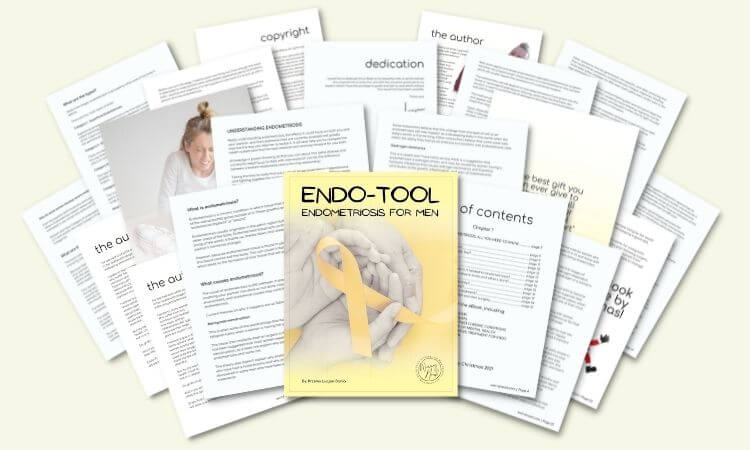
Prevalence and impact of endometriosis on women’s health.
Endometriosis has become an increasingly prevalent issue in women’s health affecting millions worldwide. In fact, among women who experience infertility problems, 30-50% are diagnosed with endometriosis.
Moreover, it has been found that women who suffer from this condition are at greater risk for developing other disorders including ovarian cancer or bowel disease later on in life.
The negative impact on quality of life can also be significant and can range from missed work or school days to long-term disability and reduced mental health quality of life.
Women with endometriosis are also more prone to depression, anxiety, and fatigue which can further complicate their ability to cope with the condition.
Importance of understanding endometriosis.
While endometriosis may seem like a minor inconvenience, it is important for women to understand the severity of this condition as it can have profound negative effects on their well-being.
Many women who suffer from endometriosis experience significant delays in receiving a diagnosis which can lead to further complications. A greater understanding of this condition by both patients and healthcare professionals is necessary in order to identify symptoms early on, allowing for timely diagnosis and treatment.
In addition, by raising awareness about the prevalence and impact of endo we create opportunities for more research into effective treatments that will help improve outcomes for women who suffer from this chronic disease.
By increasing public discourse around endometriosis we empower women everywhere to take control of their reproductive health while reducing the stigma associated with menstrual problems generally speaking.
Causes and risk factors of endometriosis.
Endo is a complex disease, and its causes are not entirely understood. However, there are several known risk factors that increase the likelihood of developing the condition. In this section, we will explore some of the most significant risk factors for endometriosis.
In the next sections, I am going to explore two of them…
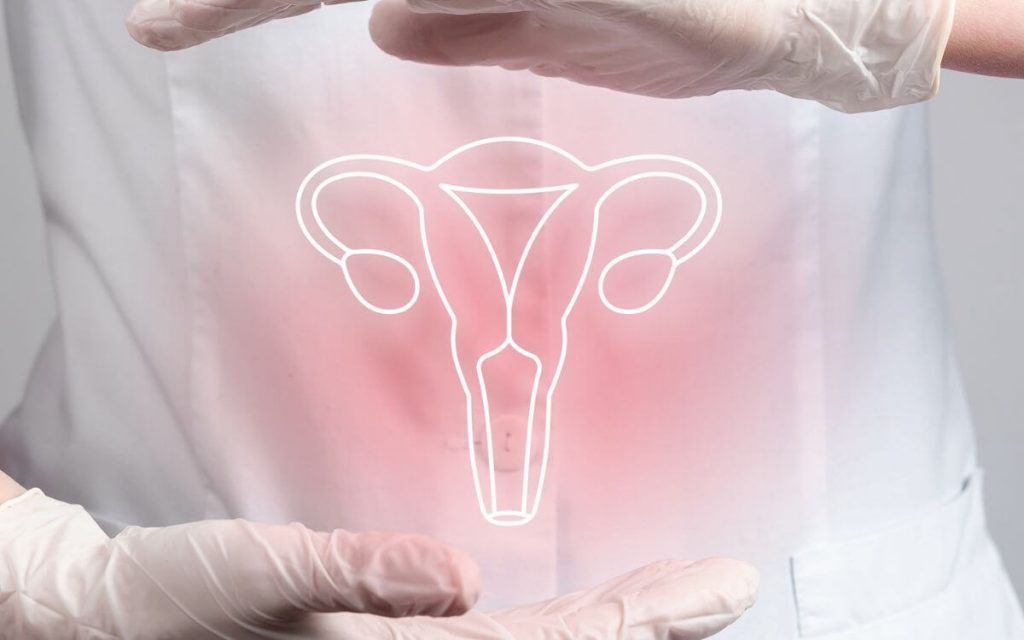
Hormonal imbalances.
Hormones play a critical role in regulating the menstrual cycle, which is why hormonal imbalances are often cited as a potential cause of endometriosis.
Specifically, estrogen levels appear to be linked to endometrial tissue growth outside of the uterus. Estrogen is produced by the ovaries and other tissues in the body, and when levels are elevated or fluctuating excessively during menstruation or pregnancy, they can trigger abnormal growth of tissue.
Progesterone is another hormone that plays a role in regulating menstruation. It opposes estrogen’s effects on tissue growth and can help prevent excessive buildup of endometrial tissue outside of the uterus. Therefore low progesterone levels may contribute to the development or worsening symptoms of this condition.
There appears to be a genetic component to it as well.
Studies have shown that women who have close relatives with endometriosis are at an increased risk of developing it themselves. It’s not yet clear which genes might be involved or how they might interact with other risk factors like hormones.
Environmental factors.
Toxins from our environment may also contribute to endometriosis development; exposure could disrupt normal hormonal balance promoting susceptibility to abnormal cell growth.
Examples include dioxins found in pesticides and polychlorinated biphenyls (PCBs) used in industrial products – Bisphenol A (BPA) and phthalates found in plastics.
Research has also suggested that exposure to environmental toxins can cause chronic inflammation, which may contribute to endometriosis development. Inflammation is the body’s natural response to injury or infection, but when it becomes chronic, it can damage tissue and lead to a range of health problems.
While the exact causes of endometriosis are not entirely understood, researchers have identified several risk factors that appear to increase the likelihood of developing this condition. Hormonal imbalances, genetics, and environmental factors all play a role in the development of endo.
At present, there is no cure for this disease. However, with proper management and support from healthcare professionals or support groups along with lifestyle changes to manage symptoms women can successfully manage their life with endo.
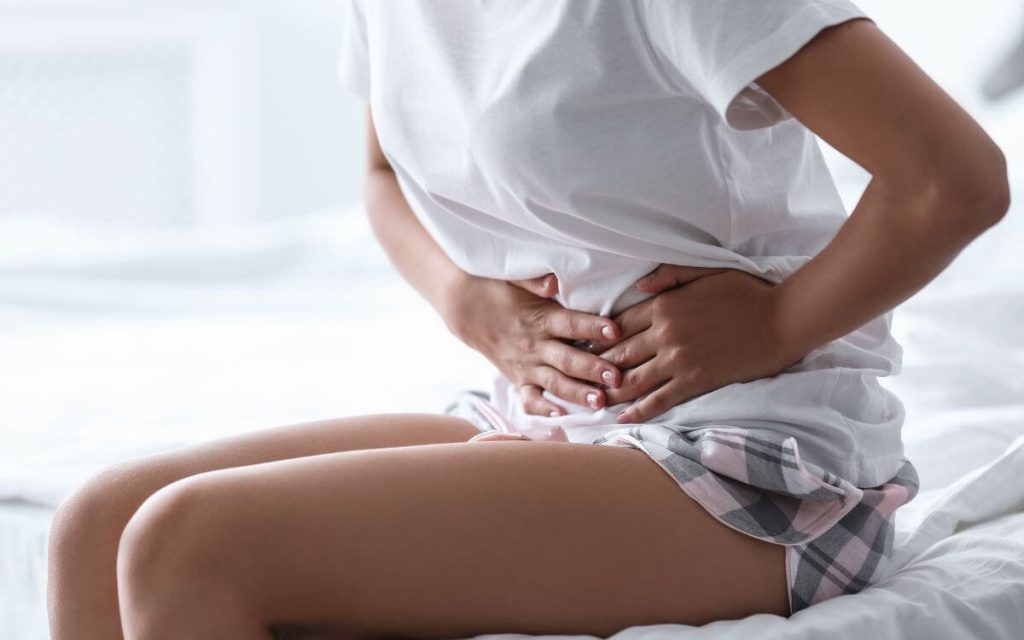
Symptoms and diagnosis of endometriosis.
Endometriosis is a complex disease that can present with a wide range of symptoms. While some women with endometriosis may not experience any symptoms, others may suffer from chronic pelvic pain, painful periods, and infertility. In this section, we will discuss the most common symptoms of endometriosis and how it is diagnosed.
One of the most common symptoms of endometriosis is painful periods. Many women with endometriosis report experiencing intense cramping before and during their menstrual cycle. The pain can be severe enough to interfere with daily activities such as school or work.
Pain may also occur during intercourse or bowel movements. The severity of period pain varies from person to person.
Some women may have mild discomfort while others experience debilitating pain that lasts for days. Pain management techniques, such as heat therapy or over-the-counter pain medication may help alleviate period-related pain.
In addition to painful periods, many women with endometriosis also experience chronic pelvic pain outside of their menstrual cycle. Chronic pelvic pain is defined as persistent discomfort in the lower abdomen lasting more than six months without any other medical explanation.
The intensity and frequency of chronic pelvic pain vary between individuals but can be severe enough to affect daily life activities such as work or exercise.
Endometriosis can also cause infertility in some women by affecting the ovaries and fallopian tubes. Endometrial tissue growth can block the fallopian tubes, making it difficult for sperm to reach the egg for fertilization. Additionally, endometrial cysts on the ovaries (known as ovarian cysts) can interfere with ovulation and hormone production.
Women with endometriosis who are trying to conceive should consult with a fertility specialist for treatment options. In vitro fertilization (IVF) or surgery to remove endometrial tissue may be recommended depending on the severity of the condition.
The only way to definitively diagnose endo is through laparoscopic surgery. This minimally invasive procedure involves inserting a small camera into the abdomen through a small incision. The camera allows doctors to visualize any abnormal growths or scar tissue in the pelvic area.
During the laparoscopy, a biopsy of any suspicious tissue is taken and sent for laboratory analysis. The results of this analysis help confirm the diagnosis and determine the severity of endometriosis present.
Early diagnosis and management of endometriosis symptoms can lead to improved quality of life for women suffering from this condition. Painful periods, chronic pelvic pain, infertility, and laparoscopic diagnosis are all important aspects of understanding and managing this complex disease.
Treatment options for endometriosis.
Endometriosis is a chronic condition with no known cure. However, there are various treatments available to manage the symptoms and improve the quality of life for women living with the condition. Treatment options can include pain management through medication, hormone therapy to regulate menstrual cycles, and surgery to remove endometrial tissue.
In the following sections, I am going to explore them one by one…

Pain management through medication.
One of the most common ways to manage endometriosis pain is through medication. Over-the-counter pain relievers such as ibuprofen or acetaminophen may be effective for mild pain.
For moderate to severe pain, doctors may prescribe stronger medications such as opioids or nonsteroidal anti-inflammatory drugs (NSAIDs) like naproxen or diclofenac. Another medication option is gonadotropin-releasing hormone (GnRH) agonists.
These drugs work by blocking estrogen production in the body, which can help reduce endometrial tissue growth.
However, GnRH agonists have side effects such as hot flashes and bone loss and are typically used for short periods of time.
Hormone therapy to regulate menstrual cycles.
Since endometrial tissue growth is stimulated by estrogen, regulating menstrual cycles through hormone therapy can help reduce symptoms associated with endometriosis.
Hormone therapy options include birth control pills, which contain a combination of estrogen and progestin hormones that can reduce bleeding and lessen pain during menstruation. Other hormone therapies include progestin-only contraceptives such as intrauterine devices (IUDs), implants, or injections that prevent ovulation and reduce endometrial tissue growth.
Surgery to remove endometrial tissue.
In some cases, surgery may be necessary if other treatment options have not provided adequate relief from symptoms. The most common surgical procedure for endometriosis is laparoscopy, a minimally invasive surgery that involves making small incisions in the abdomen to remove endometrial tissue.
In more severe cases, a hysterectomy (removal of the uterus) may be necessary. However, this should only be considered as a last resort as it can have a significant physical and emotional impact on women.
It’s important to note that while surgery can provide relief from symptoms, it does not guarantee that endo will not return. Women may need ongoing treatment and monitoring to manage their condition effectively.
Overall, treatment options for endometriosis are aimed at reducing pain and improving the quality of life for women living with the condition.
Pain management through medication, hormone therapy to regulate menstrual cycles, and surgery to remove endometrial tissue are all effective options depending on the severity of symptoms. It’s important for women with endometriosis to work closely with their healthcare providers to develop an individualized treatment plan that meets their unique needs.
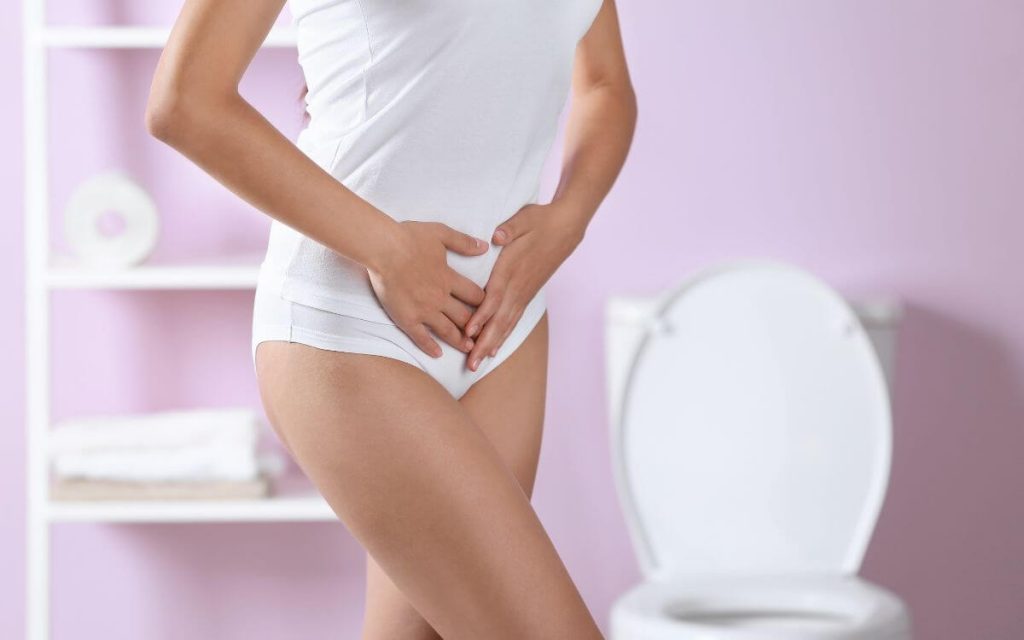
Coping with endometriosis.
Endometriosis can be a challenging condition to cope with due to its chronic pain and other symptoms that can significantly impact a woman’s quality of life. However, there are several ways in which women with endometriosis can manage their symptoms and improve their overall well-being.
Support groups and counseling services.
Connecting with others who have endo can be incredibly helpful for women who feel isolated or alone in their experiences.
Support groups and counseling services provide an opportunity for women to share their thoughts and feelings about their condition, receive emotional support, and learn coping strategies from others who have been through similar situations.
Counseling services may also help individuals understand the impact of endometriosis on mental health, body image, relationships, and sexual functioning.
Cognitive-behavioral therapy (CBT) is one type of counseling that has been shown to be effective in treating chronic pain associated with conditions like endometriosis. CBT teaches individuals how to identify negative thoughts about their pain and replace them with more positive ones that promote better coping.
There are many online support groups available where women can connect anonymously or in person at meetings or events held by organizations such as the Endometriosis Association or Worldwide EndoMarch.
Support groups provide an opportunity for women to share information about treatments they have tried or lifestyle changes that have helped alleviate symptoms. In addition, healthcare providers may refer individuals to mental health professionals specializing in working with patients dealing with chronic pain conditions like endometriosis.
Lifestyle changes to manage symptoms.
Certain lifestyle changes may help alleviate some of the symptoms associated with endometriosis. While they may not cure the condition entirely, these changes may help improve the quality of life for those who experience painful periods, fatigue, and other symptoms.
Dietary changes may include eliminating certain foods that trigger inflammation, such as processed or high-fat foods, and increasing the consumption of anti-inflammatory foods like fruits, vegetables, and whole grains. Some women may also benefit from taking supplements like fish oil or turmeric, which have anti-inflammatory properties.
Regular exercise has been shown to be beneficial in reducing pain associated with endometriosis. Exercise helps to increase circulation to the pelvic region, which can help reduce inflammation and improve overall health. Low-impact activities like yoga or swimming can be particularly helpful for individuals with endometriosis.
Practicing meditation and mindfulness techniques can help manage stress levels associated with endometriosis.
Stress reduction techniques such as deep breathing exercises, progressive muscle relaxation, or visualization may also be helpful in managing chronic pain. While there is no cure for endometriosis at this time, women coping with this condition have several options available for managing their symptoms.
Support groups provide a safe space for individuals to connect with others who understand their experiences while counseling services may offer additional strategies for coping with chronic pain. Lifestyle changes such as dietary changes or exercise can also be helpful in reducing painful symptoms associated with endo.

Ongoing research on the causes of endometriosis.
Endometriosis is a complex condition that is not fully understood. However, there are ongoing research efforts aimed at understanding the underlying causes of this disease.
One area of research involves investigating the physiological and genetic factors that contribute to endometriosis development. Scientists are also studying how hormonal imbalances and environmental factors can influence the development of this condition.
One promising area of research is focused on the immune system and its role in endo. Recent studies suggest that women with endometriosis may have an immune system dysfunction that allows endometrial cells to implant and grow outside of the uterus.
Understanding how these cells evade detection by the immune system could lead to new treatments for this condition.
Overall, ongoing research into the causes of endometriosis aims to identify new targets for therapy and develop better diagnostic tools that can help diagnose patients earlier in their disease course before it progresses.
Exploration of new treatment options.
Endometriosis treatment options currently include pain management through medication, hormone therapy to regulate menstrual cycles, and surgery to remove endometrial tissue.
However, there is a need for more effective treatments that can reduce symptoms, improve quality of life, and prevent recurrence. One area where promising advances are being made is in the field of targeted therapies.
Targeted therapies are medications designed to selectively target specific molecular pathways or proteins involved in disease progression while sparing healthy tissues. Several clinical trials are underway investigating targeted therapies for treatment.
Another approach being explored involves immunotherapy drugs that target specific proteins on cancer or immune cells involved in regulating inflammation or immune response elements associated with endometrial growths outside the uterus.
Researchers are also exploring non-surgical alternatives such as high-intensity focused ultrasound (HIFU) as a non-invasive treatment option for endometriosis.
HIFU uses sound waves to target specific tissues and can destroy endometrial tissue without surgery. There is ongoing research into the use of regenerative medicine approaches such as stem cell transplantation to regenerate damaged tissues and improve fertility in women with endometriosis.
Future research directions in endometriosis are focused on identifying new targets for therapy through understanding the underlying biology of the disease.
Several promising approaches including targeted therapies, immunotherapy, and non-surgical alternatives are being explored with the hope of providing more effective and less invasive treatment options for women with this condition.
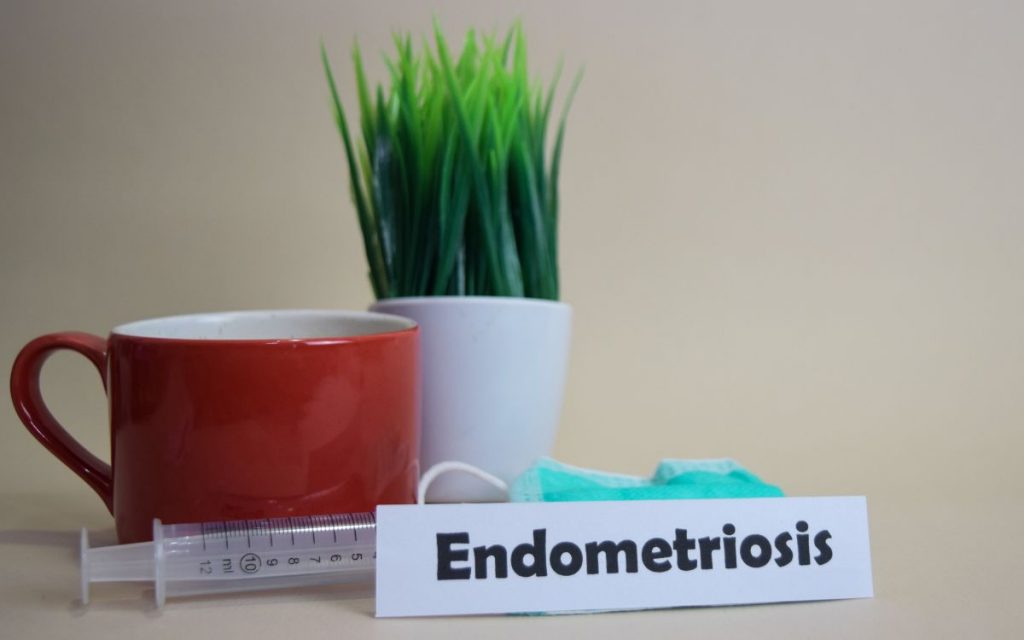
Summary for understanding endometriosis.
Endometriosis is a condition where endometrial-like tissue grows outside the uterus, causing chronic pelvic pain, painful periods, and infertility.
It is estimated to affect one in ten women of reproductive age, yet it remains underdiagnosed and often misunderstood. Hormonal imbalances, genetics, and environmental factors can all contribute to the development of endometriosis.
The symptoms of endometriosis can significantly impact a woman’s quality of life. Painful periods and chronic pelvic pain can interfere with daily activities and cause emotional distress.
Infertility is also common among women with endo. Early diagnosis through laparoscopy can lead to better treatment outcomes.
Raising awareness about endometriosis.
Despite affecting millions of women worldwide, many people have never heard about endometriosis.
This lack of awareness can lead to delays in diagnosis and treatment for those who are suffering from this debilitating condition. Raising awareness about endometriosis is crucial because it helps educate people about the symptoms and impacts of the condition.
Increased awareness can also encourage those who are experiencing pelvic pain or other symptoms to seek medical help sooner rather than later. By raising awareness about endo, we can reduce the stigma surrounding menstrual health issues and promote a greater understanding of women’s health more broadly.
Encouraging women with endometriosis.
If you have been diagnosed with endometriosis or suspect that you may have it based on your symptoms, know that you are not alone. There are countless resources available to help you manage your condition and cope with any emotional challenges that may come along with it.
Support groups for women with endometriosis provide a safe space for sharing experiences, information, and advice. Counseling services can help you manage the emotional toll of living with a chronic condition.
There are also lifestyle changes you can make to manage your symptoms, such as practicing stress-reducing activities like yoga or meditation, maintaining a healthy diet and exercise routine, and avoiding triggers that exacerbate your symptoms.
Remember that seeking medical attention early is key to managing endometriosis effectively.
If you are experiencing painful periods or other symptoms of endometriosis, do not hesitate to schedule an appointment with your healthcare provider. Endois a complex condition with significant impacts on women’s health.
By understanding its causes and symptoms and encouraging women to seek help and support, we can reduce the burden of this condition on millions of women worldwide.
Let us work together to raise awareness about endometriosis so that every woman who suffers from it knows that she is not alone.
Wishing you all the best!


About Me
Hi, I’m Lucjan! The reason why I decided to create this blog was my beautiful wife, who experienced a lot of pain in life, but also the lack of information about endometriosis and fibromyalgia for men…
